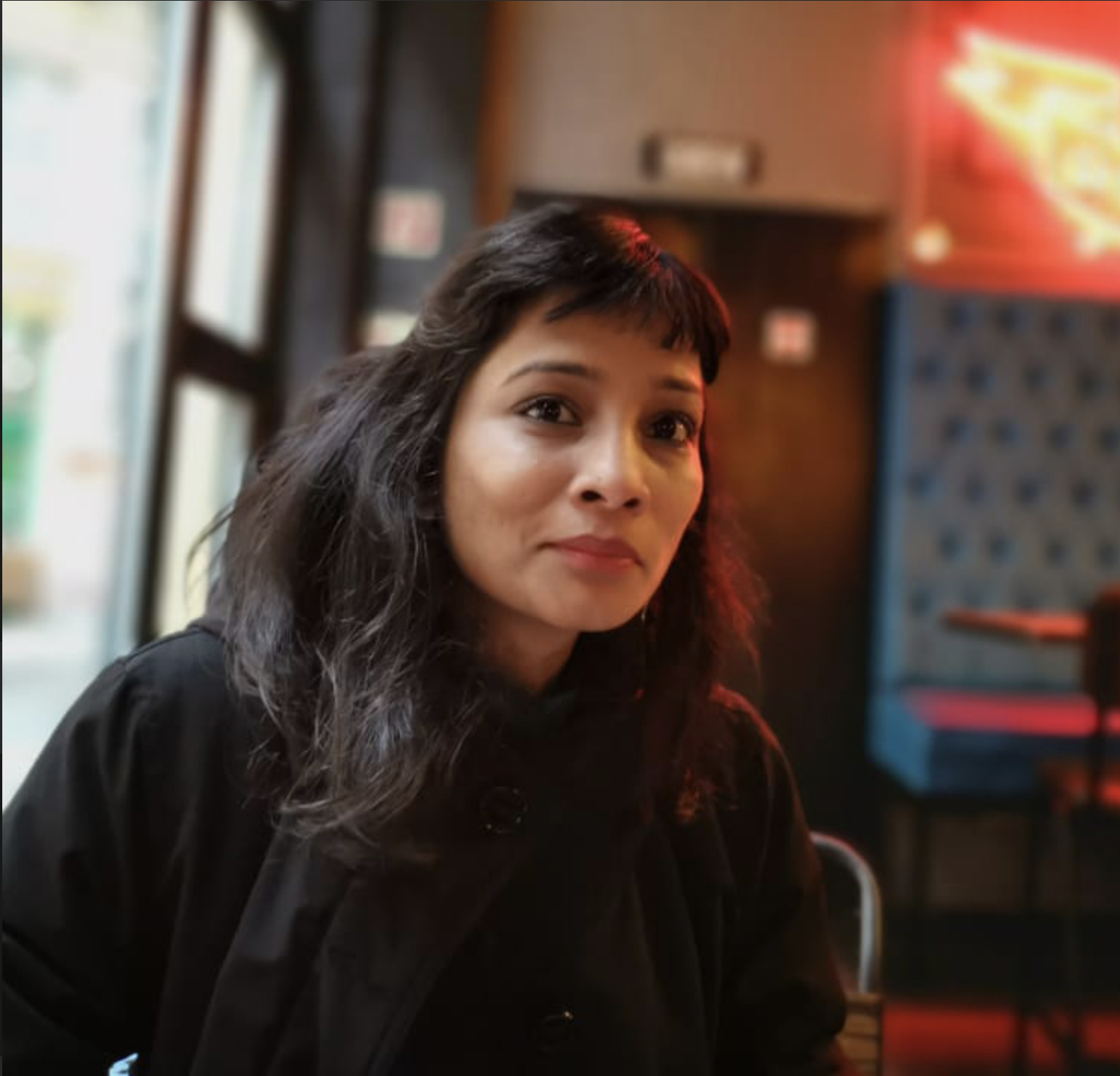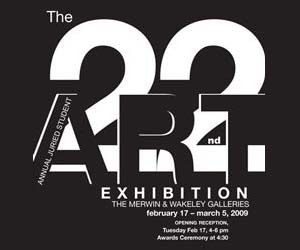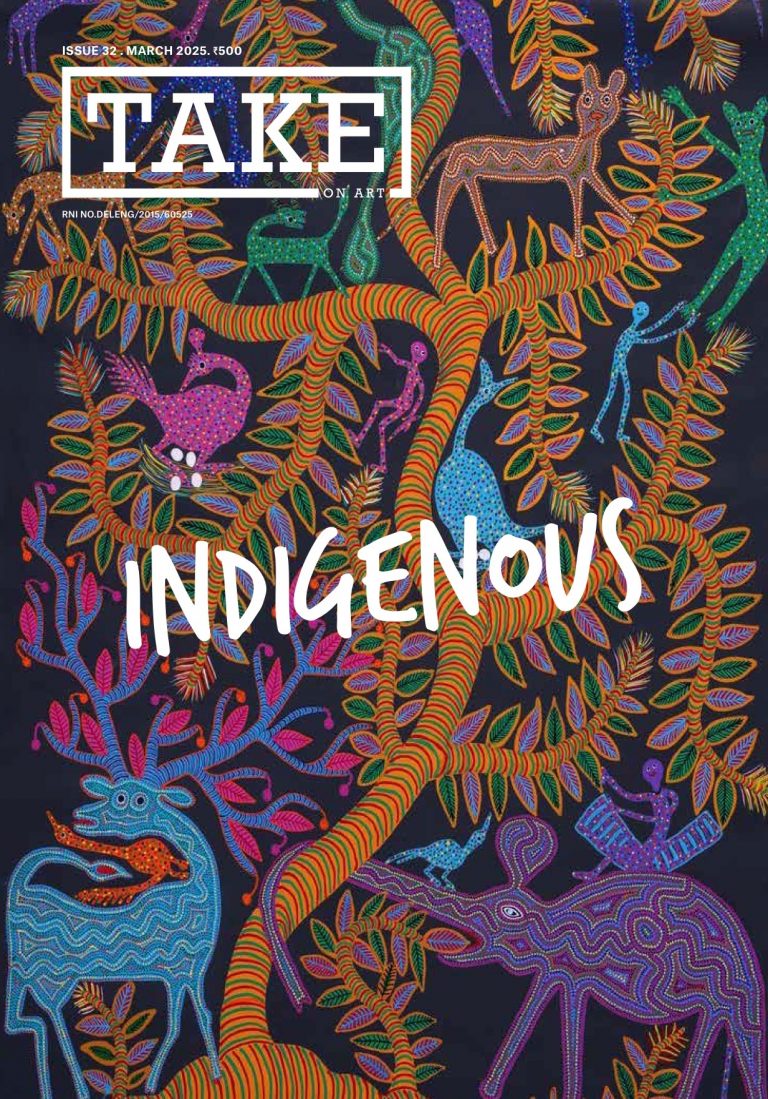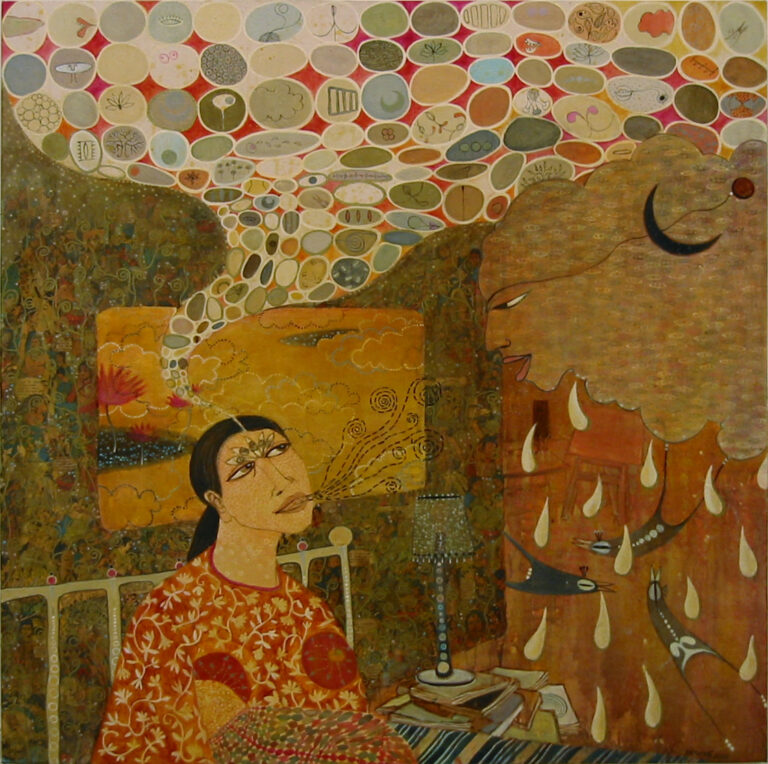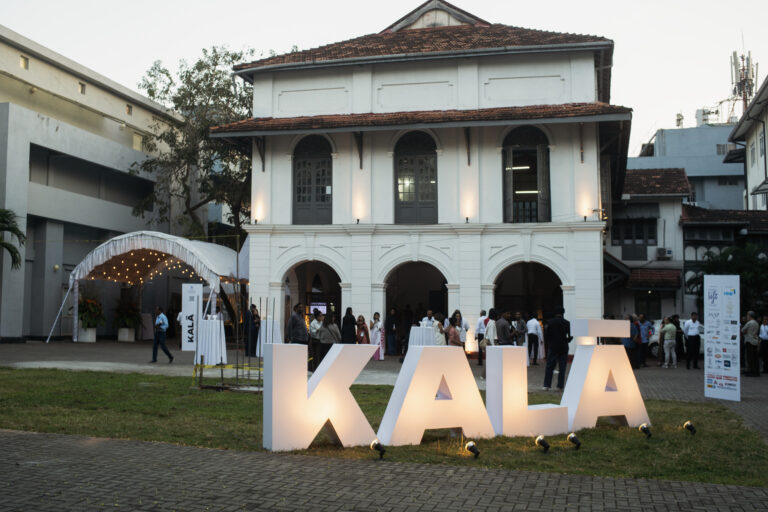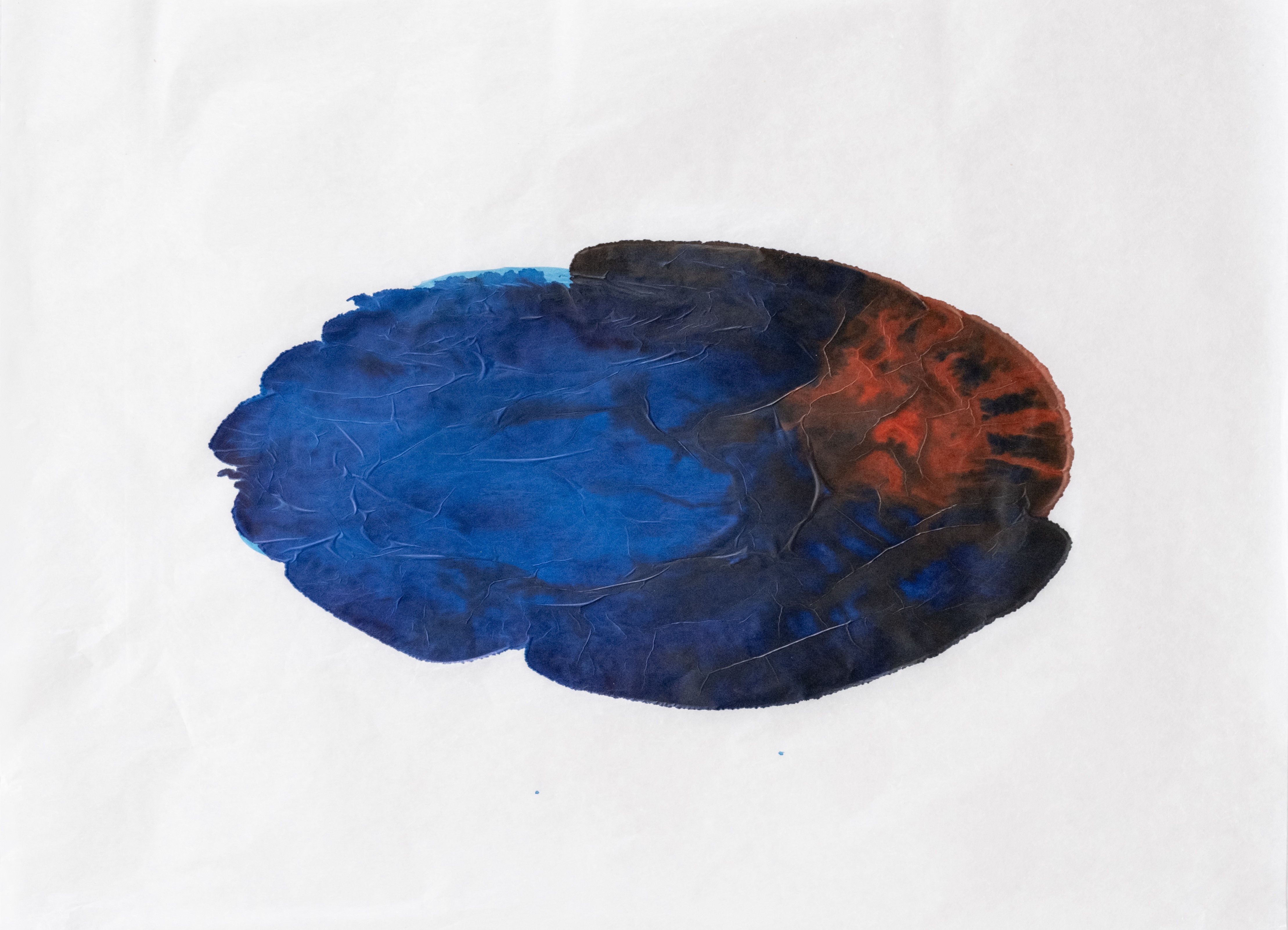 Ayesha Sultana, Inhabiting Our Bodies (2024). Watercolour on Japanese silk tissue, 76.2 x 60.96 cm. Image Courtesy: Artist.
Ayesha Sultana, Inhabiting Our Bodies (2024). Watercolour on Japanese silk tissue, 76.2 x 60.96 cm. Image Courtesy: Artist.
A breath, a marker of life. Skin defines the contours of form, with light embodying the spark of consciousness, instigating and endorsing our understanding of time and space. These elements, born of alchemical transformations we call the elixirs of life, find their distilled expression in Ayesha Sultana’s Fragility and Resilience, an account of bodily abstraction that offers an introspection into the interaction between incarnate form and environment.
The show holistically congeals Sultana’s practice as her first comprehensive solo show in the Middle East, simultaneously prompting Ishara Art Foundation to break with precedent and introduce a Bangladeshi artist within the broader context of South Asian art, opening a conversation in the region that expands on the meaning of borders through a confluence of mediums, themes, and practices reflecting Sultana’s prolific career. It underpins her engagement with abstraction—both bodily and human, offering a layered narrative that balances frailty with strength. Sultana analyzes sensations, memories, and the tactile nature of existence through her works, creating a discourse on how the body perceives, absorbs, and releases its surroundings. In this context, Sultana attempts to bring to life the intangible, or absence itself. She expresses a departure that begins with capturing the unseen while immersing herself in the making and equally allowing intuition to follow until materiality circumvents and ultimately synthesizes to fruition.
Her exhibition at the Ishara Foundation underlines intuition through a curatorial dialogue with Sabih Ahmed, Priyanka Mehra, and Marzia Rashid. It impeccably presents Sultana’s current practice across three subsects, tracing an evolution in her journey. She departs from the formal precision that initially garnered her acclaim and embraces a more fluid approach—a transmutation that unfolds through the very act of making.
The Breath Count Series offers a diary of breath through mark-making. This ongoing series (since 2018) manifests the intangible yet crucial as air and time through gestural strokes that at first feel intimate and expansive, controlled yet free. Frame by frame, perhaps an ECG of her breathing count, we experience her experiences collectively.
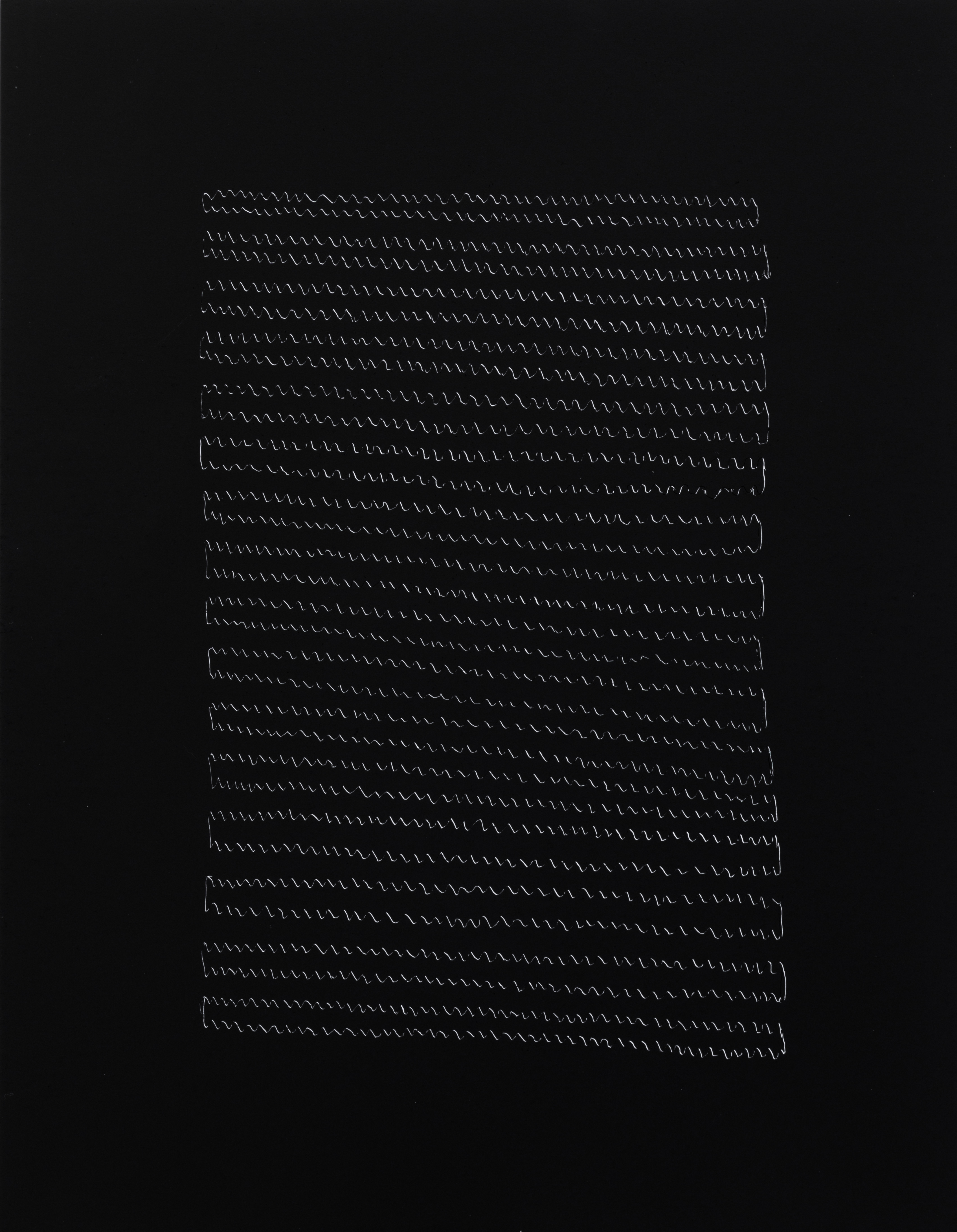
Ayesha Sultana, Detail of Breath Count XXI, XXII, XXIII (2021). Clay-coated paper, 21.6 x 28 cm each. Image Courtesy: Artist and Experimenter. From the Ishara Art Foundation and the Prabhakar Collection.
Breathe…slowly, quickly, or in intervals – is a rhythm we use to remind ourselves of our vitality. A newborn from the womb is urged to breathe with a gentle shake, marking its arrival into life. Thus, we inhale to receive and exhale to release; this perpetual exchange is a testament to our existence. It appears Sultana engages in crafting outer skins through her material choices, challenging dimensional boundaries whether through glass blowing, breath count indentations on clay-coated – scratch paper, or her father’s photographs scratched to assert her own presence, all are an attempt to preserve fleeting forms, capturing what might otherwise fade into nothingness. It situates breath as a metaphor for impermanence. As Ankoku Butoh poetically articulates, ‘The ‘tendency’ that I speak of involves extricating the pure life that is dormant in our bodies.’ In Sultana’s context, ephemeral.
The exhibition’s first room expands on a theme that seemed accentuated during Covid when an act as simple as breathing became pronounced in social and personal settings: this idea of framing breathing as an act of environmental and corporeal exchange reflects on the blurry, pervasive boundaries of breath-challenging borders imposed during the pandemic. Continuing this conversation, the thesis of liquid or moisture is constantly whispering from each work and opens another layer of access; glass sculptures serve as a metaphor for sweat deposits, left as traces across the plinth to draw attention to unseen bodily secretions, evoking sensations without depicting the body itself. In contrast, monochromatic seascape paintings, where shimmering light resembles the amorphous patterns found in the artist’s breath count series. Maybe the breath becomes emblematic of light and dark with her unanimous effort to capture gasping visages.

Ayesha Sultana, Pools (2024). Hand-blown glass, dimensions variable. Image Courtesy: Artist.
The second section exudes similar concerns but focuses on surfaces and skin. The body is a porous, mutable site that conjures snippets of multiple cosmologies. In works like the Miasm Series on Japanese silk tissue, ink is poured on the paper to test how much it absorbs while considering skin as a symbolic boundary. The dynamic membrane that bridges the internal with the external becomes a cellular interface, a medium of interaction that reminds us of what is self and what is other.
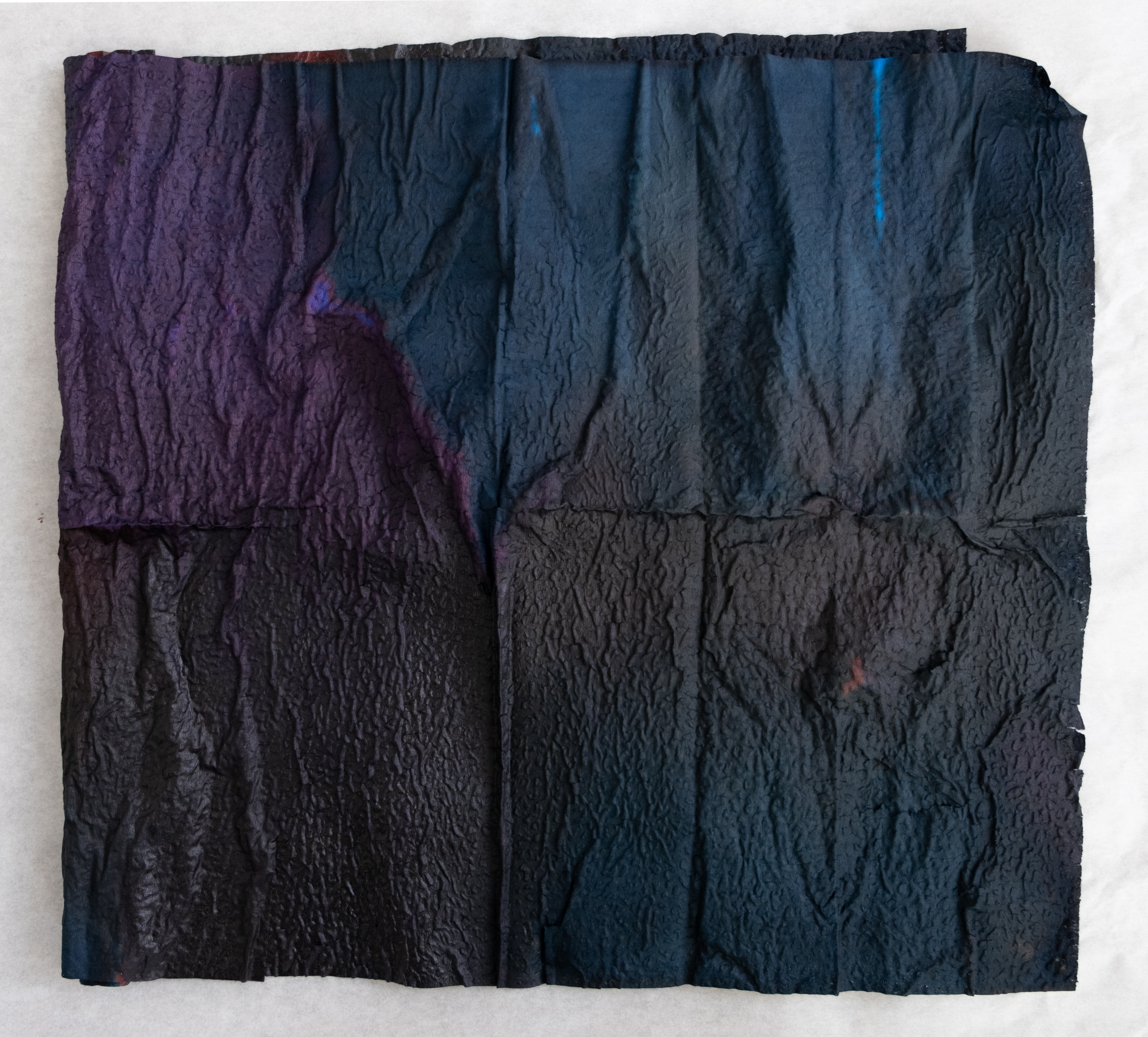 Ayesha Sultana, Miasms (2024). Ink on tissue paper, 31.75 x 28 cm. Image Courtesy: Artist.
Ayesha Sultana, Miasms (2024). Ink on tissue paper, 31.75 x 28 cm. Image Courtesy: Artist.
The last section lets us peak at Sultana’s process through deconstructed graphite works. Here, the emphasis shifts from thematic cohesion to a raw exploration of her techniques to witness the labor. The graphite reliefs mimic metal, where manipulations blur the line between the two polarities. Light, color, and texture interplay central to her poetic reflections are always rooted in tactile sensibilities. Sultana feeds from her environment-generating processes that articulate her vision. Her need not to over-narrativize her work is compelling, adding a mystique that inevitably points to more than one potential underlying genesis, empowering and whispering at the elusive or evanescent in her practice.
Through this show, perhaps unintentionally, Sultana suggests the notion of abstraction and ethics of engagement at large, often constrained by the weight of forced theoretical frameworks that dilute its true potential, the artist, and their making. For most, abstraction is dismissed as mere aesthetics, an anthropocentric view that dominates anything intangible, or possibly the disapproval is just the reflection of the times. However, it goes far beyond these narrow interpretations. Abstraction results from a rigorous distillation process of both intellect and making that’s rarely realized or recognized — it requires effort to reach the nucleus of form and meaning. Even Figuration in Art is an abstract offshoot, whether formal or conceptual. Sultana attempts to embrace this continual dialogue through her practice; her quiet yet poetic assertion of the body’s presence in its absence creates a liminal space where abstraction mirrors the human condition.
Fragility and Resilience, 6 September – 7 December 2024, Ishara Art Foundation, Dubai.









